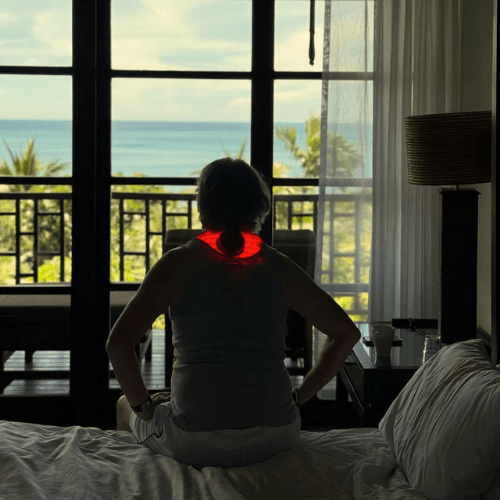Recovery with Red Light Therapy for Injuries
Sprains, strains, fractures, and surgeries are everyday battles for athletes. They affect the training process, jeopardize the competitive edge, and decrease physical performance. Moreover, the mental toll of being unable to participate in one's sport commonly worsens the physical challenges, and athletes often look for a proper recovery technique that will return them to top shape, such as Red Light Therapy for Injuries.
Recovery must be recognized within the context of sports. The athlete must treat their injuries and optimize their healing process to ensure they return stronger than before. Traditional recovery techniques, including rest, physical therapy, and medication, cannot fully cover the scope of healing. Many are introducing red light therapy for injuries—the new cutting-edge, noninvasive technology that delivers specific wavelengths of light to the cell to assist the healing process - that is, red light therapy for injuries.
Table of Contents
The Science of Red Light Therapy for Injuries: Harnessing the Power of Light for Healing
Red light therapy involves the application of low-level wavelengths of red or near-infrared light. Research into the mechanisms of action of this phototherapy provides evidence of its profound influence on cellular physiology, primarily by stimulating the mitochondria—the energy-producing structures within human cells. Upon absorption of this red light, it enhances the cell's ability to produce adenosine triphosphate, a molecule highly essential in energizing cellular activities.
Increased production of ATP directly impacts inflammation and tissue regeneration. Immediately after an injury, there will be inflammation, a natural response to injury, but this chronic inflammation can delay recovery. Studies have shown that using Red Light Therapy for injuries can help modulate inflammatory responses and decrease oxidative stress, accelerating the repairing process of damaged tissues. It dramatically improves blood circulation, helps synthesize collagen, and enhances quick recovery from injuries by promoting better health of the tissues.

Lumaflex: Tailored Red Light Therapy for Injuries Solutions for Athletes
Out of the sea of existing devices, two top-of-the-art devices designed to treat athletes are the Lumaflex Body Pro and the Lumaflex Essential. These provide variable settings so users can easily create treatment programs using red light therapy for injuries and individual needs. The Lumaflex Body Pro also provides a large treatment surface area that would be perfect for more extensive areas but still enables red light therapy for injuries.
The Lumaflex Body Pro is much more compact and user-friendly than a unit tailored for treatments done in a mobile setting, and it is waterproof. The Lumaflex Body Pro and the Lumaflex Essential are fitted with light-emitting diodes that penetrate deep into the skin to provide light therapy to the cells.
These will help athletes in various ways: after training, to reduce muscle soreness and stiffness; during rehabilitation, to enhance the healing process; or even preemptively, to have an edge in their sport. The Lumaflex devices will, therefore, enable athletes to tinker with those parts of their bodies that may give them problems, thus hastening recovery and staying competitive.
Case Studies and Research: Evidence for Red Light Therapy in Sports Medicine
Many case studies and scientific papers prove the effectiveness of red light therapy for injuries in sports medicine. Famous examples are professional athletes who successfully used Lumaflex devices to improve their injury recovery. Several athletes already use Red Light Therapy for injuries and incorporate it into their routines.
Scientific studies have supported such anecdotal evidence. A systematic review and meta-analysis in Sports Medicine stated that Red Light Therapy specifically reduced injury healing times in musculoskeletal injuries such as strains and tendonitis . Another study published earlier this year in collegiate athletes reported that regular sessions of Red Light Therapy significantly reduced pain and inflammation and increased ranges of motion considerably.
These studies demonstrate the potential and increasing acceptance of red light therapy for injuries in sports rehabilitation, thus firmly establishing it as a valuable tool for athletes who desire an expedited recovery process.
Optimizing Your Recovery: Integrating Red Light Therapy into Your Routine
To enhance recovery with Lumaflex, athletes should make red light therapy for injuries a crucial part of their recovery plan. Here are some valuable tips to add to your routine.
1. Be Consistent: Athletes who want to maximize the advantages of Red Light Therapy for injuries need to stick with it and be consistent. They should add sessions to their daily routine focusing on specific injuries or areas that need extra care.
2. Pick the Right Time: You can use red light therapy for injuries right after training to get the most out of it, stopping soreness and swelling before the workout starts. Some athletes use Red Light Therapy before training to warm up better and do well overall, and some use it while training as well.
3. Combine with Other Methods: Red Light Therapy for injuries should be used along with the usual recovery methods, such as physiotherapy, massage, and enough rest. This creates a complete plan to cover all bases for recovery.
4. Follow Guidelines: Every Lumaflex device has its own usage instructions. Players should learn these rules to get the best results in Red Light Therapy for injuries and avoid wasting time on treatments that do not work.
5. Track Progress: How long it takes to recover, how much it hurts, how your body reacts, and how you feel overall show how well Red Light Therapy for injuries is working for you. This means you might need to make some changes along the way.
The Future of Injury Recovery: A Brighter Outlook with Red Light Therapy
Science is still discovering the vast potential of red light therapy for injuries of athletes. Devices like Lumaflex help in recovery and assist an athlete in regaining confidence and staying competitive. The benefits of red light therapy for injuries in sports medicine are hard to deny, and the opportunities are mind-blowing. The accessibility improvement via technological innovations and the continuation of research to corroborate current understanding and possibly broaden the application of red light therapy across diverse therapeutic settings presents significant potential. Red Light Therapy for injuries may emerge as a pivotal strategy for athletes seeking to enhance performance outcomes in recovery and general physical fitness levels.




